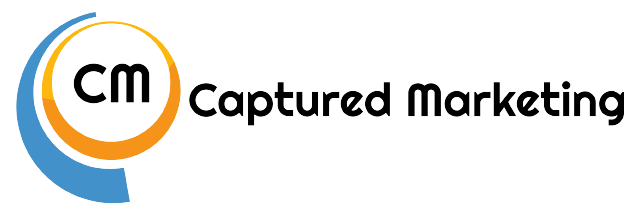
In today’s visually-driven digital landscape, images play a crucial role in telling your brand’s story and engaging your audience. However, it’s essential to ensure that your website’s visuals are optimized not only for aesthetics but also for SEO performance. As a values-driven SEO agency, we understand the importance of striking the right balance between captivating design and search engine optimization.
In this comprehensive guide, we will explore the practice of image optimization and how it can enhance user experience, reduce page load times, and contribute to better SEO performance.
Image optimization refers to the process of adjusting images on your website to reduce file size, improve load times, and enhance visual appeal without compromising their quality. This practice is not just a matter of aesthetics; it can have a significant impact on your website’s overall performance and visibility in search engine results.
In this guide, we will delve into the essential principles of effective image optimization, equipping you with practical techniques for improving your website’s visuals and maximizing your SEO efforts. Through a combination of aesthetic design and search engine optimization, you can capitalize on the power of images to create a compelling user experience, drive organic traffic, and strengthen your brand’s online presence.
In today’s competitive digital ecosystem, finding innovative ways to engage your audience and drive organic traffic is essential. Harnessing the power of image optimization is one such avenue that can improve your website’s SEO performance and user experience.
In this guide, we will explore four key principles of image optimization and share practical strategies you can implement to elevate your website’s visuals and boost search rankings.
Choose the Right Image Format
Selecting the appropriate image format is crucial for striking the perfect balance between quality and file size. Different formats offer unique advantages, and understanding when to use them can make a significant difference in your website’s performance. Consider the following common formats when optimizing your images:
- JPEG: Frequently used for photographs, JPEG images offer excellent compression capabilities. You can adjust the quality level to reduce file size further, making it an ideal format for most general-purpose images.
- PNG: Well-suited for images with text or graphics, PNG format supports lossless compression and maintains transparency. While PNG files can be larger than JPEGs, they offer better quality preservation and are recommended for intricate images.
- WebP: Developed by Google, WebP is a modern format that combines the best features of JPEG and PNG. It offers lossless and lossy compression, as well as transparent alpha channels, providing excellent quality with smaller file sizes.
Compress and Optimize Images for Faster Load Times
Reducing image file size without sacrificing quality is a delicate balancing act, but critical for optimizing your visuals and maintaining fast page load times. Implement these techniques to compress and optimize your images effectively:
- Use Online Image Compression Tools: Numerous online tools allow you to compress your images without loss of quality. These tools can significantly reduce the file size, ensuring faster load times and improved SEO performance.
- Optimize Images before Uploading: Adjusting your images’ dimensions and resolution before uploading can help control file size effectively. Ensure that images are appropriately sized for their container and avoid using unnecessarily high-resolution images.
- Employ Lazy Loading Techniques: Lazy loading defers the loading of off-screen images until the user scrolls to view them. This approach can reduce initial page load times and minimize unnecessary data usage for users who don’t scroll through your entire site.
Implement Descriptive and SEO-Friendly Image File Names and Alt Text
Optimizing your image’s metadata is essential for enhancing search engine rankings and ensuring accessibility. Follow these best practices for creating descriptive and SEO-friendly image file names and alt text:
- Use Descriptive File Names: Choose file names that accurately describe your image content and incorporate relevant keywords. Clearly defined file names make it easier for search engines to understand the context of your image and improve your site’s indexing.
- Write Meaningful Alt Text: Alt text serves as an alternative description for users who cannot view images and is used by search engine crawlers to gather information about your content. Ensure to provide a brief, accurate, and keyword-rich description of your image in the alt text.
- Avoid Keyword Stuffing: Maintain a natural and appropriate use of keywords in file names and alt text. Overloading your metadata with unnecessary or irrelevant keywords can lead to search engine penalties and damage your website’s reputation.
Leverage Responsive Images and High-Density Displays
As more and more users access websites on a variety of devices and screen sizes, it’s crucial to ensure your images are optimized for all viewing contexts. Implement these strategies for leveraging responsive images and high-density displays:
- Utilize Responsive Image Markup: Incorporating the HTML ‘srcset’ attribute allows your website to serve different image sizes based on the user’s screen size and resolution, guaranteeing an optimized browsing experience.
- Prepare Images for High-Density Displays: High-density displays (like Apple’s Retina) require images with double the resolution to maintain sharpness. Ensure to create high-resolution versions of your images and implement the necessary markup to serve them selectively.
Capitalize on the Power of Image Optimization
By prioritizing image optimization, you can unlock countless benefits, from accelerated website performance and improved user experience to enhanced search engine rankings and online visibility. Understanding and implementing the above-mentioned techniques will set you on the path to fully tap into the potential of image optimization and drive lasting success in the digital arena.
Are you struggling to take your online presence to the next level? Do you want to optimize your website and improve your search engine rankings? If so, Captured Marketing is here to help. Our team of SEO experts can help you navigate the complex world of online marketing and build a powerful, engaging, and visually stunning website that captures your unique brand identity and rises above the competition. If you’re looking for a trusted partner to help you achieve your online goals, look no further than Captured Marketing. Contact us today to learn more about our SEO services in Phoenix and take the first step towards a more successful online future!




